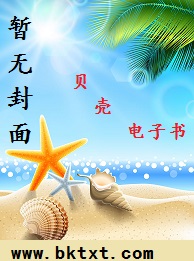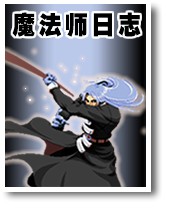魔法英语中学生语法大全-第2章
按键盘上方向键 ← 或 → 可快速上下翻页,按键盘上的 Enter 键可回到本书目录页,按键盘上方向键 ↑ 可回到本页顶部!
————未阅读完?加入书签已便下次继续阅读!
①表示所属的类别
这种用法表示人或事物的身份、性质等; 此时的a可以不译出。
My father is a manager and my moth er is a doctor。 我爸爸是经理; 我妈妈是医生。
②表示泛指的某人、某物
用来指某人或某物; 不明确指出具体的人或事物; 只说明大体情况。
My father bought me a nice present; but I don’t know
我爸爸给我买了一件很好的礼物; 可我不知道是什么。
③表示微弱的one的概念
a/an和one同源; 但有时意义差别较大; a/an泛指同类事物中的“任何一个”; one则强调数目概念; 表示“一个”; 不是“两个、三个”。
-Can a child finish the work? …No; but a man can。
这件工作; 孩子能干得了吗? 不能; 得成年人做。
-Can one child finish the job? -No; at least two children can。
这件事; 一个孩子能干得了吗?一个孩子干不了; 至少得两个。
I would like a cup of coffee and an egg。 我想要一杯咖啡和一个鸡蛋。
There is going to be an English lecture tomorrow。 明天将有一场英语讲座。
④表示单位量词的“每一”
指某种人或事物中的任何一个; 或表示“每一”的概念。
Take three pills a day and you’ll get better soon。 每天吃三片药; 你很快就会好的。
We have a music class once a week。 我们每周上一次音乐课。
⑤表示类属中的“任何一个” 用来列举此类人或事物中的任何一个都具有某种能力或某种特征。
A parrot can talk like a person; but it can’t think like a person。
鹦鹉可以像人一样说话; 但不能像人一样思考。
A child should have more free time to think。
二、定冠词
定冠词the与this/that/these/those同源,在辅音前读'',在元音前或强调时读作'',意为“这、那、这些、那些”等。
1、定冠词的含义
(1) 表示特定的人或物
这种用法可以表示上文提到过的或谈话双方都明确的人或物,特指某人或某事物,以区别于同类中的其他人或事物。
Is this the book that you are looking for ?
这就是你正找的书吗?
Would you mind turning up the radio a little?
I can’t hear it clearly。
你把收音机的音量调大一点好吗?我听不清楚
(2)表示地球、宇宙中的独一无二的事物
世界上独一无二的东西很多,这里所指的独一无二主要是指各种天体及世界上比较有影响的物体。
Man is now studying and using the sun。
人类正在研究和利用太阳。
Man traveled to the moon scores of years ago。
几十年前人类就登上了月球。
(3)表示地点、方向、时间
用于表示在具体的地点、方位; 具体的时间或某天的一部分等。
We have friends all over the world。
我们的朋友遍及世界。
My parents live in the country。
我的父母住在乡下。
in the east 在东方 from the west 从西方
on the left 在左边 on the right 在右边
to the right 朝右边 in/at the beginning 在开始
in/at the end 在末尾 in the middle of。。。 在中间
in the morning 在早晨 in the afternoon 在下午
(4)表示某类属的全体
这种情况常用于单数名词前; 代表一类人或事物。
Do you know who invented the computer? 你知道是谁发明了计算机吗?
The cat; like the dog; is liked by many people。 猫和狗一样被很多人喜欢。
三、零冠词(内容略)
四、冠词的省略
零冠词主要指不能运用冠词的情况; 冠词的省略主要指可用可不用冠词的情况; 这与名词前零冠词的运用是不同的。(内容略)
第一部分第4章 代 词
代词是代替名词以及起名词作用的短语、不定式、动词的…ing形式、从句或句子的词。在英语中代词用得极为广泛。正确地运用代词可以使句子简洁、明快; 但如果使用不得当也容易产生意义理解上的偏差。英语中的代词分为九类: 人称代词、物主代词、反身代词、指示代词、相互代词、疑问代词、不定代词、关系代词和连接代词。
一、人称代词
1、人称代词是表示“我(们)”、“你(们)” 、“他(们)”、“它(们)”的词。人称代词不仅指人; 也可指物; 有人称、数和格的变化。人称代词有主格和宾格之分;
主格形式在句中作主语、表语等成分; 宾格形式在句中作动词宾语、介词宾语、同位语等; 有时也作表语。
I chose Mary;but she didn’t agree to go with me 。
(she为主格做主语,me为宾语作介词with的宾语。)
我选择了玛丽,可她不愿和我一起去。
I love swimming;It keeps me fit。 (it在句中作主语)
我喜欢游泳,它可以使我保持健康。
Who took away all the books here?谁把这里的书都拿走了?
It's I/me。 ( I/me 作表语,在口语中作表语常用宾语)是我。
We;us three will be able to fulfil the task。 (us作we的同位语) 我们,就我们三人能出色完成这项任务。
Me believe you! (宾格形式在口语中表示强调,偶尔也可作主语。)我相信你
2、人称代词的用法
(1)主格I在句中的任何位置都必须大写。
(2)在英语中如果出现多个人称代词; 如果是单数并列需要按照“你”、“他/她”、“我”的顺序排列;复数并列则按照“我们”、“你们”、“他们”的顺序排列。
即单数并列为you; he/she (him/her) and I (me); you and I (me); 复数并列为we(us); you and they(them)。如果是承担责任; 说话者则把I (me) 或we (us) 放在第一位。
You; she and I should work together and play together。 我、你和她应当共同工作、一起玩。
I and Li Ming broke the window。 我和李明把窗户打碎了。
(3)it有时可指不知性别的“婴儿或小孩”或对人物身份进行断定。
The baby is crying。 It must be hungry。 婴儿在哭; 他/她准饿了。
-Who is standing at the back? -是谁站在后面的?
-It must be Laura。 -准是劳拉。
(4)人称代词用于as和than之后; 如果as和than看作介词; 此时往往用宾格;如果是连词; 则往往用主格。
She speaks Japanese as well as me/I。 (此时口语中常用me)
She speaks Japanese as well as I do。 (此时把as作为连词) 她日语说得和我一样好。
(5)人称代词单独使用时; 常用宾格而不是主格。
-I’d like to stay here for another week。 -我还想再在这里呆一周。
-Me too。 -我也是。
-You are supposed to help Jack。 -你应该帮助杰克。
-Why me? -为什么是我帮助他?
3、人称代词的特殊用法
(1)it的详细用法请参阅第二部分第6章“It的用法”。
(2)we; you; they的特殊用法
在英语中; we; you和they都可泛指人们; 可译为“我们”、“你们”、“他们”。
We all get into trouble sometimes。 (we泛指人们) 我们每个人有时都会遇到麻烦。
They say that everyone can make mistakes。 (they泛指人们) 人们说每个人都会犯错误的。
You should do your best at all times。 (you泛指人们) 无论何时人们都应尽最大的努力。
(3)she; he等的特殊用法
① she可以用来代表国家、船只、大地、月亮等。
China will always do what she has promised to do。 (she代指国家) 中国总会按照自己的承诺去做任何事情的。
Titanic was the greatest boat of the time but she sunk down to the bottom of the
Atlantic Ocean。
(she代指船只) 泰坦尼克号是当时最大的船; 可它沉到大西洋的海底了。
② 男主人常用she/her代指自己的爱车、宠物等。
Would you please take care of my little parrot?
She needs good care。 (she代指鹦鹉)
代词并列有顺序; 单数并列2 3 1; 复数并列1 2 3; 若把错误责任担; 第一人称最当先。时时注意比身份; 人总要在动物前。单身男女同时到; 男士反而要优先。人称代词三格用法 主语用主格; 宾语用宾格; 属于谁所有; 就用所有格。
-Your car looks smart。 When did you buy it? -你的车样子真好。什么时候买的?
-I bought her a week ago。 (her代指车) -一周前买的。
③ 女主人常用he/his代指自己的车、宠物等。
My car still runs perfectly。
He has been working for me a dozen years。 (He代指the car) 我的车依然运转很好; 他为我工作已12年了。
④ 在寓言、故事中; 温柔、善良的动物(鹿、猫、熊猫、小鸟等)常用she替代; 凶猛、粗野的动物(老虎、狮子、狼、熊、狐狸等)常用he替代。
Panda Lily is a new member of the circus。
She needs time to get used to the new life。 (She替代Panda Lily)
熊猫丽丽是马戏团的新成员。她需要时间适应新的生活。
The fierce tiger came at the monkey when the monkey escaped him into the thick
trees。 (him代指the tiger) 凶猛的老虎向猴子扑来; 而猴子逃到茂密的树林里去了。
二、物主代词
1、物主概述
特主代词是表示所有关系的代词; 是人称代词的所有格形式; 表示“所有”。与人称代词一样; 也分第一人称、第二人称和�

